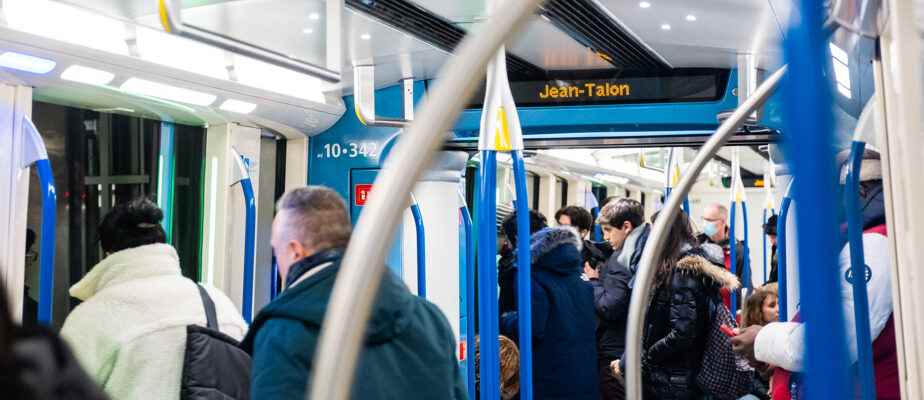Montreal public transport users have returned to crowded metro cars and buses since the start of 2023. The Société de transport de Montréal (STM) says it has observed an “increase in ridership” in the metro for a week in particular . But it is not yet the return of the “sardine class”: attendance has so far remained well below the pre-pandemic level.
“Indeed, we are seeing an increase in traffic this week. […] The number of trips increased by about 6% compared to last week. This growth is slightly greater than the growth usually observed during this period,” said the company’s spokesperson, Philippe Déry, in response to our questions.
In total, preliminary traffic data for Tuesday, January 17 is “71% of the pre-pandemic level, a slight increase of 2 percentage points compared to an average business day in fall 2022 (69%)”, continues Mr. Déry. This is a fairly stable figure compared to recent months; in 2023, however, the organization wants to regain 75% to 80% of its traffic.
It should be understood that the STM is still in “a period of returning from vacation”, CEGEP students – a significant portion of metro and bus users – not all having returned yet. Nevertheless, “it’s encouraging and we want to see this trend materialize in the longer term,” said the spokesperson.

PHOTO CHARLES WILLIAM PELLETIER, THE PRESS
The number of subway trips increased by about 6% this week compared to last week.
What to expect?
In November, the STM revealed that its budget hole continued to widen: it was 43 million last year; it is now close to 78 million. At that time, the group had announced that the level of service would once again be reduced on certain bus and metro lines in 2023.
Two scenarios were then on the table: high frequency bus lines and services to the city center which would see their frequency decrease; and “readjustments” on the orange and green lines, with in the first case a rush hour service reduced by around thirty minutes, and in the second, a waiting time between trains extended by around fifteen seconds.
For the moment, the STM has been refused to say whether these “readjustments” have an impact on the filling of trains or buses during rush hour.
“As the winter service offer has been in place for a short time and while our ridership data for January is not yet complete, we are not in a position to carry out a more in-depth analysis. We will therefore not comment on this question, but are aware of the importance of maintaining a good level of service to ensure the attractiveness of public transport,” answers Philippe Déry.
To date, he adds in passing, the service offer in effect this winter and that of last fall are “very similar”. “We monitor the load on board the vehicles [bus et rames de métro] and emerging trends in order to optimize the service offer in place to continue to respond adequately to mobility needs,” recalls the STM.

PHOTO CHARLES WILLIAM PELLETIER, THE PRESS
More and more users are returning to the metro to get around Montreal.
Funding, sinews of war
However, it is clear that the cuts are a reality at the STM. On Tuesday, the TRANSIT Alliance – a group of promobility organizations – lamented that insufficient government funding is leading to “avoidable” service cuts, citing the recent example of the cancellation of bus service “every 10 minutes max” of the Société de transport de Montréal on the eight lines that still offered it during peak hours.
For Catherine Morency, holder of the Mobility Chair at Polytechnique Montréal, the “main question should be to identify how to better finance mobility services quickly”.
“It is sure that it will come back 100% [de l’achalandage prépandémique] possibly. Behaviors will stabilize. It’s just that the pandemic is much longer than we thought, but there, we still have to make sure that public transit remains a good option, which is not the case, ”concludes the specialist at this subject.
In December, The Press reported that the shortfall caused by the pandemic in the finances of public transport companies could reach 900 million within five years, according to the Association du transport urbain du Québec.
At the Autorité régionale de transport métropolitain, the shortfall is 500 million, and at the STM, it is nearly 80 million. The Minister of Transport and Sustainable Mobility of Quebec, Geneviève Guilbault, had recognized in the process that in the long term, “we cannot operate like this from year to year, with emergency aid at the last minute “. His cabinet reiterated on Tuesday that finding a solution is a priority right now.
